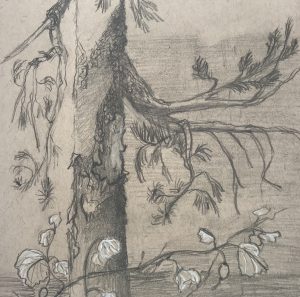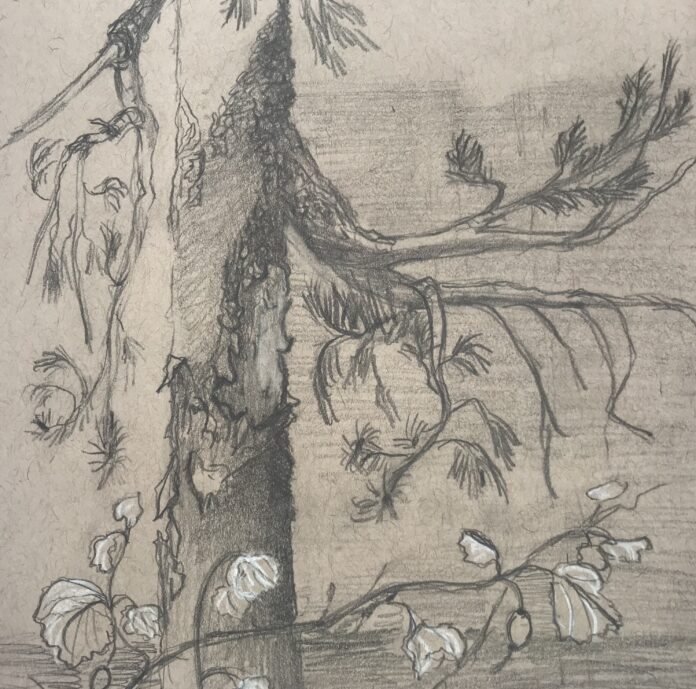BY LESLIE REGO

Throughout history, the bark of trees has been utilized for medicinal or economic purposes. Barking, the harvesting of the bark, generally took place in the early spring. In some areas, barking became almost a holiday since it meant extra money for the family and a social respite from the daily routine.
The harvesting of the oak-tree bark was particularly important to the local economy. Everyone in the village or town would meet by the oak trees—even the children would take a break from school to help with the harvest, much to the teacher’s chagrin.
The inner bark of the oak tree was used in the tanning process to make leather crafts such as shoes, boots, bottles, and harnesses. Without leather, soldiers could not march to war nor could animals plow the ground. Liquids could not be carried. Winter work would be impossible without strong boots.
The western hemlock (which is more prevalent in northern Idaho) has also been utilized in the tanning process, but we have many trees in our area with a storied history of harnessing the bark in various ways.
The outer bark of white or paper birch was used by Native Americans as wigwam coverings and also in the construction of canoes. Birch-bark containers were assembled to collect and store food. Toys, musical instruments, and hunting and fishing gear were made from the paper-birch tree bark.
The bark from the aspen tree produces a compound called salicin, which is similar to the active ingredient in aspirin. A concentrated tea of the bark can relieve joint pain and fever. If the bark is infused into beeswax, it can be applied over sunburns, bug bites or acne. The astringent properties of the bark help with inflammation.
Willow bark also has the active ingredient salicin and has been used for thousands of years as a pain reliever. In texts dating back to the Egyptians, willow bark appears as relief from pain. In Chinese traditional medicine, 2500 years ago, there is a recorded use of the bark as an analgesic.
The inner bark of the lodgepole pine tree is often scavenged by black bears. Sometimes you can see the claw marks where the bears have scraped away the outer bark. Native Americans and western settlers in the springtime chewed the inner bark like gum to cure toothaches or to soothe sore throats. The bark can also be softened in water and applied as a dressing for scalds, burns or skin infections.
Festivities have come and gone throughout the ages. The barking holiday in the springtime belongs to a bygone era, but the joy felt during the “barking” time when communities were working together is a timeless appeal.
Leslie Rego is an Idaho Press Club award-winning columnist, artist and Blaine County resident. To view more of Rego’s art, visit leslierego.com



